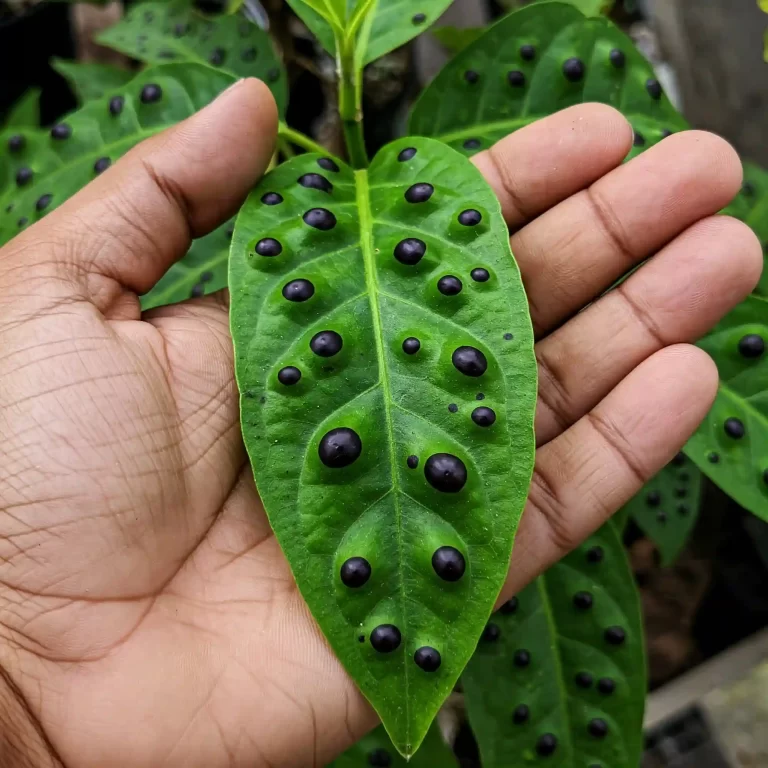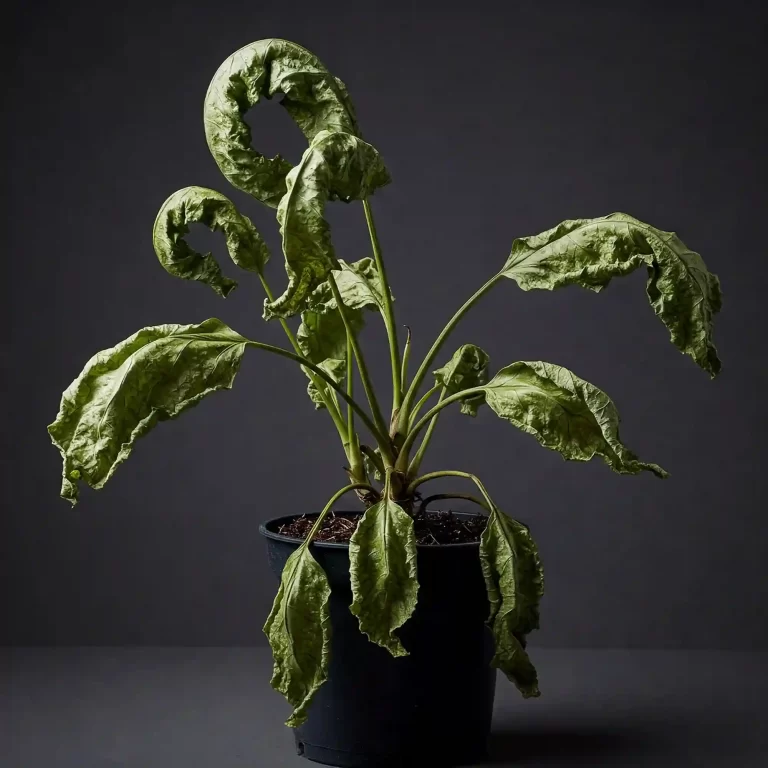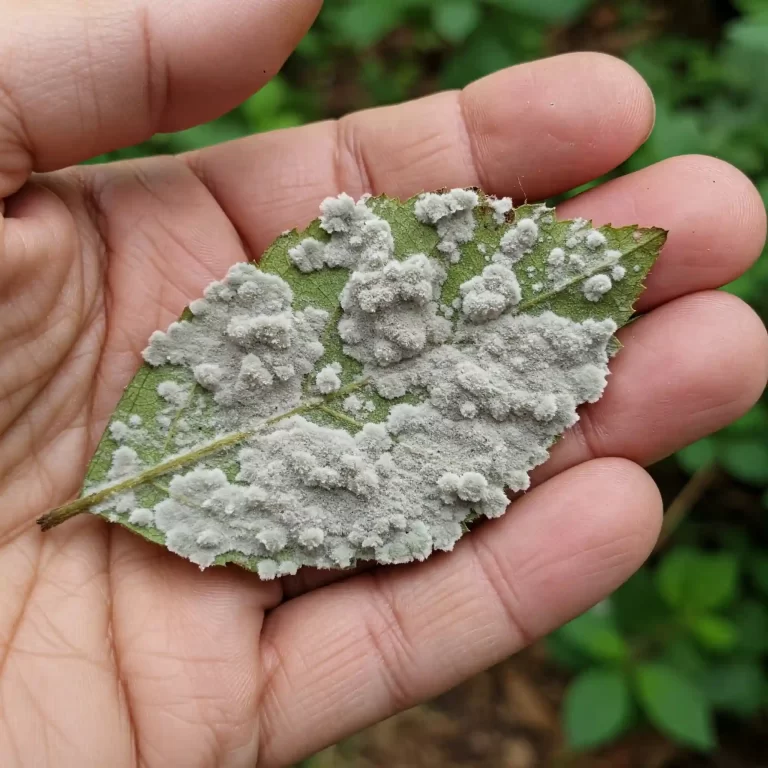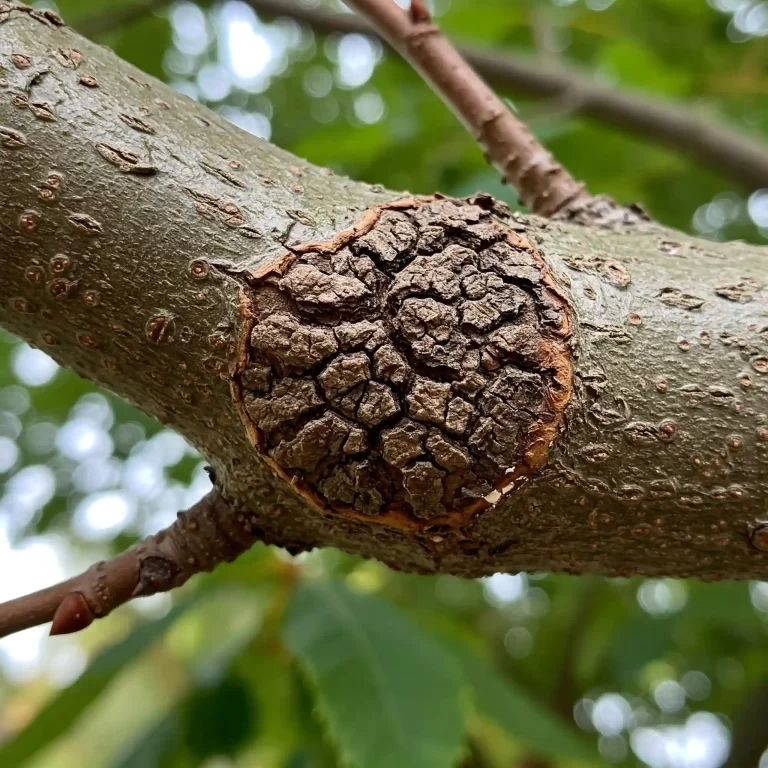| – Philodendron jungle boogie is a stunning hybrid plant with long, narrow leaves that have serrated edges. |
| – It is easy to care for and can grow up to 6 feet tall, making it a perfect statement piece for any space. |
| – It prefers bright indirect light, but can tolerate medium light. Avoid direct sunlight, as it can scorch the leaves. |
| – It likes to be watered when the top two-thirds of the soil are dry. Do not overwater or underwater it, as it can cause root rot or leaf drop. |
| – It benefits from regular fertilization during the growing season, but not in winter. Use a balanced houseplant fertilizer, diluted to half the recommended strength. |
| – It does not require much pruning, unless you want to control its size or shape. You can trim off any dead, damaged, or diseased leaves with a clean pair of scissors or pruning shears. |
| – It can be easily propagated by stem cuttings, either in water or soil. Choose a healthy stem with at least one or two nodes and place it in a warm and bright place. |
| – It may face some common problems, such as pests, diseases, toxicity, or environmental stress. You can prevent or treat them by following the tips and tricks in this article. |
Do you love plants that have a funky and exotic vibe? Do you want to add some tropical flair to your home or office? If you answered yes, then you might want to consider getting a philodendron jungle boogie. This plant is a stunning hybrid that has long, narrow leaves with serrated edges that look like saw blades or tiger teeth. It is also known as Henderson’s pride, serratum, narrow escape, or tiger tooth. It is easy to care for and can grow up to 6 feet tall, making it a perfect statement piece for any space. In this article, we will show you how to make your jungle boogie dance with joy by providing you with the best tips and tricks on how to care for this amazing plant. We will cover everything from lighting, watering, fertilizing, pruning, propagating, to troubleshooting common problems. By the end of this article, you will be a jungle boogie expert and your plant will thank you for it. Let’s get started!
Philodendron jungle boogie is a beautiful plant that belongs to the Arum or Araceae family, which includes more than 1000 species of plants, such as monstera, anthurium, and peace lily. It is a hybrid of philodendron species from the rainforests of Ecuador and the Caribbean, where it grows as a shrub or a climber under the canopy of the trees. It was introduced to the market by Costa Farms, a leading grower of houseplants in the US, in 2019. It is also registered with the International Aroid Society, a nonprofit organization that promotes the study and conservation of aroids.
The plant has a striking appearance, with long and narrow leaves that can reach up to 18 inches in length and 3 inches in width. The leaves have serrated or saw blade-like edges, which give the plant its common names, such as tiger tooth, chainsaw, or jungle boogie. The leaves are dark green in color, with a glossy and smooth texture. The plant can grow up to 6 feet tall and 3 feet wide, depending on the pot size and the support it receives. It can also produce flowers, but they are rare and insignificant. The flowers are small and green, with a spathe (a leaf-like bract) and a spadix (a spike-like inflorescence) that contain the male and female parts.
The plant is popular and desirable among plant lovers, because it has a funky and exotic vibe that adds some tropical flair to any space. It is also easy to care for, as it can adapt to various conditions and does not need much attention. It is a stunning hybrid that can make a statement in any room, whether it is placed on a shelf, a table, a floor, or a wall. It is also a great choice for beginners, as it is not very demanding or fussy.
In this article, we will show you how to make your jungle boogie dance with joy by following these simple steps:
- Lighting: How to provide the optimal light for your plant
- Watering: How to water your plant properly and avoid overwatering or underwatering
- Fertilizing: How to feed your plant and boost its growth and health
- Pruning: How to trim your plant and keep it in shape
- Propagating: How to multiply your plant and share it with others
- Troubleshooting: How to prevent and treat common problems that your plant may face
Read on to find out how to make your jungle boogie dance with joy by following these simple steps.
Lighting
One of the most important factors for your jungle boogie plant care is lighting. Your plant needs enough light to stay healthy and vibrant, but not too much light to cause leaf burn or fading. The key is to find the right balance between bright and dim, and to provide your plant with the best type and duration of light.
The optimal lighting condition for your plant is bright indirect light, which means that the light is filtered or diffused by something, such as a sheer curtain, a blind, or a tree. This type of light is gentle and natural for your plant, as it mimics the light that it receives in its native habitat, the rainforest canopy. Bright indirect light can also enhance the color and shape of your plant, by making the leaves more glossy and smooth, and the edges more serrated and sharp.
Your plant can also tolerate medium light, which means that the light is not too bright or too dim, but somewhere in between. This type of light is suitable for your plant, as it can still provide enough energy and warmth for your plant, without causing too much stress or damage. Medium light can also maintain the appearance and health of your plant, by keeping the leaves dark green and firm, and the stems strong and upright.
You should avoid direct sunlight, which means that the light is unfiltered or undiffused by anything, such as a window, a lamp, or the sun. This type of light is harsh and unnatural for your plant, as it can scorch the leaves and cause them to lose their color and texture. Direct sunlight can also stunt the growth and flowering of your plant, by making the leaves smaller and thinner, and the flowers rare and insignificant.
Some tips on how to achieve the ideal lighting for your plant are:
- Place your plant near a window that receives filtered light, such as through a sheer curtain or a blind. A north-facing or east-facing window is ideal, as it can provide bright indirect light for most of the day, without exposing your plant to direct sunlight. A south-facing or west-facing window can also work, as long as you protect your plant from the intense afternoon sun, by moving it away from the window or using a shade.
- Rotate your plant occasionally, to ensure that all sides of your plant receive equal amounts of light, and to prevent your plant from leaning or growing towards one direction. You can rotate your plant every week or every month, depending on how fast your plant grows and how uneven the light is. You can also adjust the angle or position of your plant, to make it more symmetrical or balanced.
- Monitor the leaf color and shape, to check if your plant is getting enough or too much light, and to adjust the lighting accordingly. If your plant is getting enough light, the leaves should be dark green, glossy, and smooth, with serrated edges. If your plant is getting too much light, the leaves may turn pale, yellow, or brown, with dry or crispy edges. If your plant is getting too little light, the leaves may turn dull, limp, or floppy, with smooth or curved edges.
Some signs of lighting problems and how to fix them are:
- Leaf burn: This is when the leaves get scorched or damaged by direct sunlight, and show signs of browning, yellowing, or curling of leaf tips or edges, dry or crispy leaves, stunted or distorted growth. To fix leaf burn, you should: move your plant to a shadier spot, away from direct sunlight, adjust the light intensity or duration, prune the damaged leaves, provide optimal care for your plant.
- Leggy stems: This is when the stems get stretched or elongated by low light, and show signs of long or thin stems, large or floppy leaves, crowded or tangled branches, reduced light or air circulation. To fix leggy stems, you should: move your plant to a brighter spot, with more indirect light, prune the stems to encourage bushier growth, provide a support or a trellis for your plant, improve the lighting or ventilation for your plant.
Watering
Another crucial factor for your jungle boogie plant care is watering. Your plant needs enough water to stay hydrated and healthy, but not too much water to cause root rot or fungal infections. The key is to find the right balance between wet and dry, and to water your plant according to its needs and the environment.
The best way to water your plant is to follow the “soak and dry” method. This means that you should allow the top two-thirds of the soil to dry out completely before watering your plant again. Then, you should water your plant thoroughly, until the water drains out of the bottom of the pot. Do not let your plant sit in water, as this can cause root rot and other problems. You should also empty the saucer or tray under the pot, if there is any.
To check the soil moisture, you can use your finger, a wooden stick, or a moisture meter. Simply insert your finger or the stick into the soil, up to the second knuckle, and feel the moisture level. If it feels dry, it is time to water. If it feels moist, wait for another day or two. If you have a moisture meter, you can insert the probe into the soil and read the scale. If it shows dry or low, water your plant. If it shows moist or high, do not water your plant.
Some tips on how to water your plant properly are:
- Water your plant in the morning or evening, when the temperature is cooler and the evaporation is lower.
- Use room temperature water, as cold or hot water can shock the roots and cause leaf damage.
- Avoid tap water or distilled water, as they can contain chemicals or minerals that can harm your plant. Use rainwater or filtered water instead, as they are more natural and gentle for your plant.
- Water your plant less frequently in winter, when the plant is dormant and the soil dries out slower. Water your plant more frequently in summer, when the plant is active and the soil dries out faster.
Some signs of watering problems and how to fix them are:
- Overwatering: This is one of the most common causes of plant death, as it can lead to root rot, fungal infections, pests, and diseases. Some symptoms of overwatering are: wilting, yellowing, browning, or dropping of leaves, mushy or black stems or roots, foul smell from the soil, mold or fungus on the soil or the plant. To fix overwatering, you should: stop watering your plant until the soil is completely dry, improve the drainage of the soil by adding perlite, sand, or bark, repot your plant into a new pot with fresh soil, cut off any rotten roots or stems, treat any pests or diseases with appropriate products.
- Underwatering: This is another common cause of plant stress, as it can lead to dehydration, nutrient deficiency, and stunted growth. Some symptoms of underwatering are: curling, crisping, or browning of leaf edges, drooping or shriveling of leaves, slow or no growth, dry or brittle stems or roots. To fix underwatering, you should: water your plant thoroughly and regularly, check the soil moisture more often, move your plant to a less sunny or less windy spot, mist your plant occasionally, add some organic matter or mulch to the soil to retain moisture.
Fertilizing
Fertilizing is another important aspect of your jungle boogie plant care, as it can provide your plant with the nutrients it needs to grow and thrive. However, fertilizing is not always necessary, and too much fertilizer can be harmful for your plant. The key is to fertilize your plant moderately and wisely, and to follow the instructions on the label.
The best time to fertilize your plant is during the growing season, which is spring and summer. During this time, your plant is more active and needs more nutrients to support its growth and development. You should fertilize your plant once a month, using a balanced houseplant fertilizer, such as 10-10-10 or 20-20-20. You should dilute the fertilizer to half the recommended strength, as full strength can be too strong and burn the roots and the leaves. You should not fertilize your plant in winter, when the plant is dormant and does not need much nutrients.
Some tips on how to apply the fertilizer and avoid overfeeding are:
- Water your plant before fertilizing, as this can prevent the fertilizer from burning the roots and the leaves.
- Follow the instructions on the label, and do not exceed the recommended frequency or amount of fertilizer.
- Do not fertilize a stressed or dormant plant, as this can cause more harm than good.
- Flush the soil occasionally with water, to remove any salt buildup or excess fertilizer that can accumulate in the soil.
Some signs of fertilizing problems and how to fix them are:
- Leaf burn: This is a common symptom of overfertilization, as the fertilizer can cause salt buildup in the soil and damage the roots and the leaves. Some signs of leaf burn are: browning, yellowing, or curling of leaf tips or edges, dry or crispy leaves, stunted or distorted growth. To fix leaf burn, you should: reduce the frequency or amount of fertilizer, leach the soil with water to wash away the excess fertilizer, repot your plant into a new pot with fresh soil, prune the damaged leaves.
- Nutrient deficiency: This is a rare symptom of underfertilization, as the plant can not get enough nutrients from the soil and shows signs of weakness or stress. Some signs of nutrient deficiency are: pale or yellow leaves, purple or red veins, small or thin leaves, slow or no growth, poor flowering. To fix nutrient deficiency, you should: increase the frequency or amount of fertilizer, supplement with micronutrients, such as iron, magnesium, or calcium, provide optimal care for your plant.
Pruning
Pruning is another optional but beneficial part of your jungle boogie plant care, as it can help you control the size and shape of your plant, encourage new growth, and remove any dead, damaged, or diseased leaves. Pruning can also improve the appearance and health of your plant, by making it more bushy and compact, and preventing any infections or pests from spreading.
The best time to prune your plant is in spring or summer, when the plant is actively growing and can heal faster. You can use a clean pair of scissors or pruning shears to cut off any unwanted stems or branches, close to the main stem or the soil level. You can also remove any dead, damaged, or diseased leaves, by cutting them off at the base of the leaf stem. You should avoid pruning more than one-third of the plant at a time, as this can stress the plant and reduce its energy. You should also wear gloves and wash your hands after pruning, as the plant sap can be irritating to the skin and eyes.
Some tips on how to prune your plant and when to do it are:
- Prune your plant to control its size and shape, according to your preference and space availability. You can prune your plant to make it shorter, narrower, or more symmetrical, by cutting off the longest or the most uneven stems or branches.
- Prune your plant to encourage new growth, by cutting off the tips of the stems or branches. This will stimulate the plant to produce more side shoots and leaves, making it more bushy and compact.
- Prune your plant to remove any dead, damaged, or diseased leaves, by cutting them off at the base of the leaf stem. This will prevent any infections or pests from spreading, and improve the appearance and health of your plant.
Some signs of pruning problems and how to fix them are:
- Overpruning: This is when you prune too much or too often, and cause the plant to lose its shape, vigor, or beauty. Some signs of overpruning are: sparse or uneven foliage, weak or thin stems, slow or no growth, poor flowering. To fix overpruning, you should: prune less or more gently, provide optimal care for your plant, be patient and wait for the plant to recover.
- Underpruning: This is when you prune too little or too rarely, and cause the plant to become leggy, unruly, or unhealthy. Some signs of underpruning are: long or stretched stems, large or floppy leaves, crowded or tangled branches, reduced light or air circulation, increased pests or diseases. To fix underpruning, you should: prune more or more regularly, remove any unwanted or unhealthy parts, shape your plant to your liking, improve the lighting or ventilation for your plant.
- Infection: This is when you prune with dirty or infected tools, and cause the plant to develop fungal or bacterial diseases. Some signs of infection are: bleeding, oozing, or discolored sap, sunken or water-soaked lesions, black or brown spots or streaks, wilting or dying of leaves or stems. To fix infection, you should: disinfect your tools with alcohol or bleach, apply a wound sealant or a fungicide or a bactericide to the cuts, remove any infected parts, isolate the plant from other plants, provide optimal care for your plant.
Propagating
Propagating is another fun and rewarding part of your jungle boogie plant care, as it can help you multiply your plant and share it with others. Propagating can also help you save your plant, if it is damaged or diseased, by creating new plants from healthy parts. Propagating is also easy and simple, as you only need a stem cutting and some water or soil.
The best way to propagate your plant is by stem cuttings, either in water or soil. You can take a stem cutting that has at least one or two nodes (the bumps where the leaves emerge) and place it in a glass of water or a pot of moist soil. You should choose a healthy stem that is young and vigorous, and cut it below a node, using a sharp and sterile tool. You should also remove the lower leaves, leaving only one or two leaves at the top. You should place the cutting in a warm and bright place, but away from direct sunlight or cold



